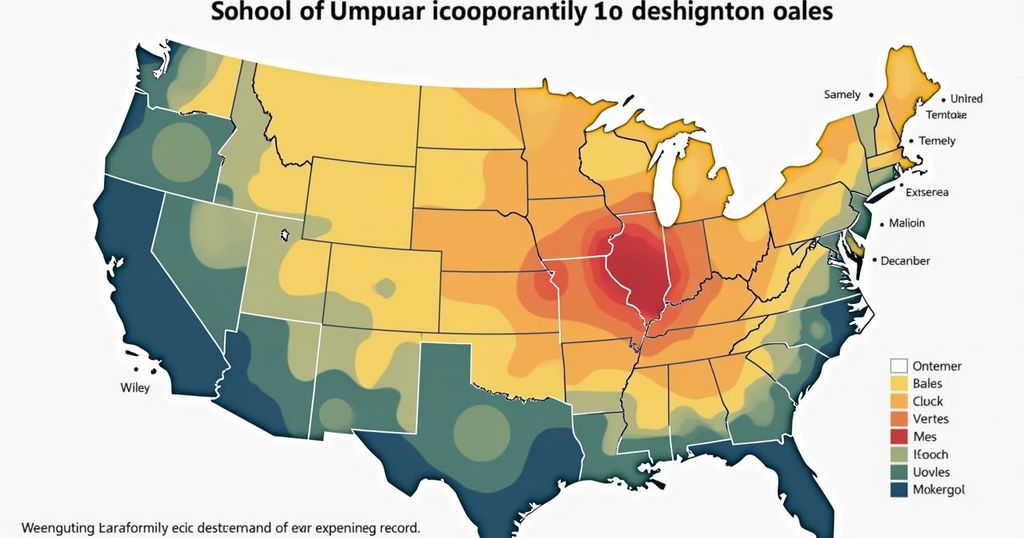Inadequate Earthquake Preparedness: Washington Schools at Risk
Washington state public schools face significant earthquake risks, with over 378,000 students attending schools lacking seismic evaluations or retrofits. Disparities in data access and accuracy hinder preparation efforts, leading to potential vulnerabilities as state agencies struggle with incomplete evaluations. The lack of legislative mandates for seismic assessments exacerbates the situation, leaving communities unaware of risks.
The state of earthquake risk data for public schools across Washington is alarmingly insufficient and difficult to access. Despite significant seismic modifications being made at certain sites, such as Stadium High School, the Washington Office of Superintendent of Public Instruction inaccurately lists the school as lacking seismic retrofits. As of the last academic year, over 378,000 students were enrolled in schools built prior to the implementation of modern seismic building codes, with those schools having no risk evaluations or retrofits recorded. Additionally, about 167,000 students attended institutions already deemed to have ‘high’ or ‘very high’ seismic risks due to their geographical and structural characteristics. Efforts to consolidate this seismic data aim to highlight vulnerabilities and prioritize necessary building improvements for disaster preparedness. In contrast to Washington’s drawn-out approach since the last evaluations began more than a decade ago, states like California, Oregon, and Utah have successfully published comprehensive seismic inventories much earlier. Although Governor Jay Inslee has indicated that funding appears to be gradually improving, Scott Black, the program development manager at the Office of Superintendent of Public Instruction, stated that the process appears to be painfully slow. A multitude of school districts have submitted documentation of seismic evaluations and enhancements that they have undertaken, yet these improvements are frequently not recognized in the state’s official database. Various districts cited discrepancies stemming from differences in data versions being referenced. Additionally, an analysis revealed that numerous evaluations funded by the $3.4 million School Seismic Safety Project have not been integrated into the official database, despite legal obligations to do so. Washington hosts numerous active fault lines, with the Cascadia subduction zone posing a severe threat. A 2022 report from the Federal Emergency Management Agency predicted that a substantial earthquake could lead to moderate to complete destruction of approximately 2,000 schools in Washington state. Furthermore, while the Department of Natural Resources estimates that around 70% of K-12 schools are situated in high seismic risk zones, the Office of Superintendent of Public Instruction only categorizes 28% of schools as having high seismic hazards, a disparity attributed to differing methodologies in assessing seismic risks. Currently, there are no mandatory laws requiring the assessment of seismic risks in school buildings, which leaves many school communities unaware of the threats they face due to poor data transparency. Although Washington’s aim to conduct thorough evaluations of school infrastructures has persisted for years, the target completion timelines set forth have long since passed, resulting in assessments completed for only a fraction of older structures. The lack of a legislative push for mandated evaluations further exacerbates the situation. Experts emphasize the importance of making seismic data publicly accessible, as this transparency can encourage community involvement in securing funding for building enhancements. Plans are in motion to integrate the school seismic data into a statewide inventory of unreinforced masonry structures, which pose significant risks during earthquakes. Yet, complications persist, with essential construction data still lacking for numerous older buildings, complicating the emergency planning process. Historical efforts like those made by the Edmonds School District following the 2001 Nisqually earthquake show progress in addressing these vulnerabilities. Nevertheless, the state has struggled to accurately reflect completed retrofitting endeavors within its official documentation. Misinterpretation of retrofit criteria continues to hinder proper reporting and acknowledgment of completed seismic safety improvements.
The article discusses the pitfalls associated with earthquake risk data accessibility and accuracy for public schools in Washington state. Numerous statistics underscore the considerable vulnerabilities of schools constructed prior to modern seismic safety regulations. Outdated and incomplete data have impeded efforts to enhance building safety and disaster preparedness. Additionally, the involvement of foundational structural evaluations conducted decades ago reveals inefficiencies in the current assessment methods between different state agencies. As Washington struggles to remedy these shortcomings in data transparency and completeness, the dire potential consequences of seismic events loom over many unprepared institutions.
In conclusion, Washington state’s incomplete and obscure earthquake risk data poses significant threats to public school safety for nearly 600,000 students. The lack of legislative requirements for seismic assessments, compounded by discrepancies between district records and state databases, has created a precarious situation where many schools remain inadequately prepared for potential earthquakes. With no widespread mandates for seismic evaluations or clear public access to existing data, the state’s readiness for seismic events remains questionable.
Original Source: washingtonstatestandard.com




Post Comment